י״ח אייר ה׳תשפ״ה | May 16, 2025
Lag B’omer Parades with the Rebbe Throughout the Years
From amongst the various things which characterize the day of Lag B’omer, the parades that passed before the Rebbe are by far the most unique and extraordinary. Read an overview of each parade from 5703 until 5750.
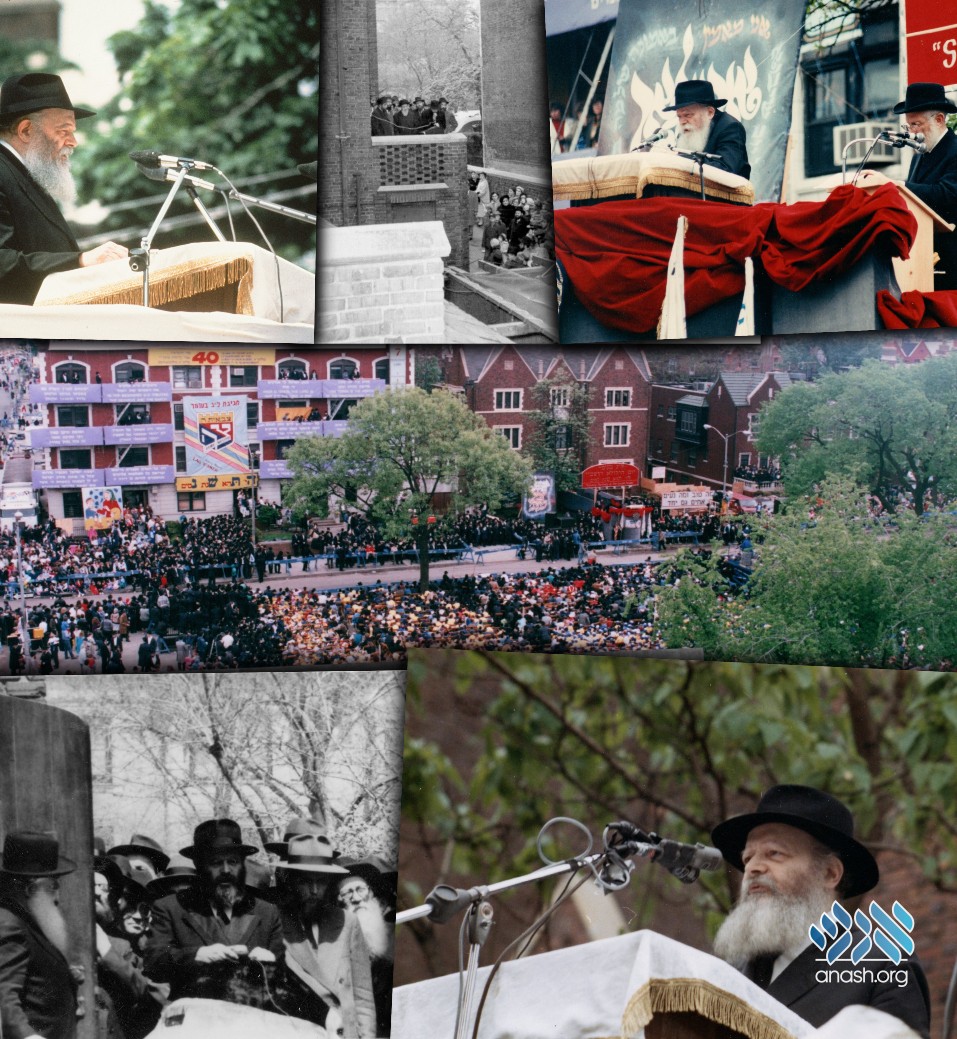
From amongst the various things which characterize the day of Lag B’omer, the parades that passed before the Rebbe are by far the most unique and extraordinary. Read an overview of each parade from 5703 until 5750.
A Chassidisher Derher
From amongst the various things which characterize the day of Lag B’omer, the parades that passed before the Rebbe are by far the most unique and extraordinary. In addition to the Sichos that were said, the Rebbe would spend much time with the children as they presented the mivtzoim and other Jewish concepts in creative ways.
His holy face shining, the Rebbe would wave and salute repeatedly, gazing intently at all who passed before his eyes. It was clear that the Rebbe derived immense pleasure from this tremendous Kiddush Hashem and demonstration of Jewish pride, evident as well from the many Maanos the organizers received following the parades.
This overview describes the various parades that took place throughout the years, including a glimpse into some of the behind-the-scenes preparations and the Maanos and Horaos received from the Rebbe regarding the parades.
TO CONQUER THE WORLD
To properly grasp and appreciate the very concept of the Lag B’omer parades and its development, we must preface with a short description of the network of Hafatza the Frierdiker Rebbe established immediately upon arriving on American shores, all of which was directed by the Rebbe Nessi Doreinu.
Merkos L’inyonei Chinuch was the educational arm of Lubavitch and the main avenue of Hafatza. Its goal was to fill the void caused by the utter lack of true Jewish education in America, which was costing the spiritual future of American Jewry.
As parts of these efforts, the National Council for the Furtherance of Jewish Education – “Shaloh” – was founded. The organization worked in various ways to enroll as many Jewish children as possible into yeshivos and Talmud Torahs.
Mesibos Shabbos was established as a way of holding gatherings of Jewish learning and activities for children. These gatherings consisted mainly of public school children and, throughout the years, the number of participants reached over ten thousand. Of Mesibos Shabbos, the Rebbe Nessi Doreinu once said by a Farbrengen in 5702: “The [Frierdiker] Rebbe has begun with Mesibos Shabbos; from here and on the world will be conquered…”
As part of these efforts, central gatherings were held from time to time for these children outside of 770. These gatherings took place sometimes in the form of a parade, at times a rally and sometimes both together. The first parade took place on Chol Hamoed Pesach 5702, merely half a year after the initiation of Mesibos Shabbos.
The subsequent rallies and parades throughout all the years were officially arranged by the Mesibos Shabbos organization. In pictures and videos of the Lag B’omer parades, the Mesibos Shabbos logo can be seen alongside the logo of Merkos L’inyonei Chinuch, adorning the Rebbe’s bima.
5703 – IN THE BEGINNING…
The first of the Lag B’omer rallies ever to take place was held in the year 5703. It was this kinus, beginning with only a handful of children, which eventually developed into the famous Lag B’omer parades attended by tens of thousands of children, eventually spreading to all corners of the globe. The Rebbe Nessi Doreinu spoke for the children.
5713 – ANI MAAMIN
This year was the first in which the Rebbe participated in a Lag B’omer rally during the nesius. The Rebbe came out onto the porch overlooking the courtyard (known as the ‘Shalash’) where the children were gathered and requested for ‘Ani Maamin’ to be sung. The Rebbe then spoke a Sicha that was translated into English by Reb Shlomo Zalman Hecht. This was the first time the Rebbe had ever said a Sicha for children. The singing or playing of ‘Ani Maamin’ was to become a tradition by Lag B’omer parades throughout the coming years.
5716 – THE FIRST PARADE
The first genuine Lag B’omer parade to ever take place was in 5716. Eastern Parkway was closed off to traffic for the occasion.
On the morning of the parade, the children gathered in their respective Mesibos Shabbos locations and from there boarded buses to 770. The children were split up into groups of twenty under the care of two madrichim and, as they waited impatiently for the Rebbe to come out, they received snacks and drinks, and recited the brachos in unison.
Reb Shlomo Zalman Hecht carefully explained to the children the importance of listening and paying attention to every word uttered by the Rebbe. Finally, the Rebbe appeared and spoke a Sicha for the children, afterwards translated by Reb Shlomo Zalman, in which he bentched the children who learned in Jewish schools and urged those who didn’t yet, to convince their parents to give them the opportunity to do so.
Following the translation, the Rebbe requested for Ani Maamin to be sung by the two thousand children gathered after which the parade began. The children marched before the Rebbe bearing aloft Yiddish and English signs proclaiming “KEEP THE SHABBOS HOLY” and “SEND YOUR CHILDREN TO A YESHIVA” and the like.
They marched until Nostrand Ave. where they boarded buses to Prospect Park, where a day of fun awaited them. Suddenly, the Rebbe appeared in the park and began to walk among the children, with a broad smile illuminating his holy face. It seemed that the time the Rebbe had spent with the children by 770 wasn’t enough, and despite his busy schedule, had come all the way to the park to spend even more time with the children! The Rebbe’s surprise appearance was the perfect way to conclude the first parade, which was to be remembered for years to come.
Following this great success, it was decided from then on to make a parade every year when Lag B’omer would fall out on a Sunday, thus allowing for the public school children who have off on Sundays to attend.
5717 – “And You Shall See the Kohen”
The parade for that year was the first to be designated not only for the children of Mesibos Shabbos but for all Jewish public school children.
On the Shabbos before Lag B’omer, after shacharis, Reb Moshe Leib Rodtshtein from the Rebbe’s secretariat stood up on a bench and began to speak about the importance of the parade.
He demanded that everyone involve themselves in the preparations and in ensuring that as many children as possible come to the parade and see the Rebbe, quoting the possuk ‘ונרפא הכהן את וראה הנגע. ‘Just as then, when one had to merely gaze at the Kohen, he would be healed, so too, today, when a non-religious child will see the Rebbe, it will impact his entire life.’
On Sunday morning over eighty buses converged upon Crown Heights, carrying children from all over Metropolitan New York, including groups from as far as New Haven, Connecticut, and Boston, Massachusetts.
Reb Yaakov Yehudah Hecht, who inherited the task of translating the Rebbe’s Sicha into English from his brother, directed the proceedings. After the children sang ‘Ani Maamin’, the Rebbe requested that ‘Mimitzrayim Ge’altanu’ be sung as well, after which he said a Sicha.
The children then marched in groups before the Rebbe, who stood on a high bima, built especially for the occasion.
5720 – 200 Years
Three years later, in 5720, another parade was held. During the preparations, it seemed to the organizers that the parade would not work out. Before the parade, when the Rebbe passed by on his way into 770, he surveyed the preparations and commented that everything looked quite in order. Indeed, the parade turned out to be a great success.
5720 also marked 200 years since the histalkus of the Baal Shem Tov and a large sign proclaiming the auspiciousness of the year was hung up.
5726 – Bechokosai Teileichu
In 5726 the scope of the parade was broadened and some five thousand children participated. In addition to the usual public school children from previous years, many Talmud Torahs and Jewish day schools took part as well.
Despite gathering storm clouds, thousands of children paraded down Eastern Parkway holding signs whose slogans called for the furtherance of Jewish education and Torah observance. A band playing lively chassidishe nigunnim accompanied the parade. From atop the specially built, elevated bima, the Rebbe surveyed the impressive crowd of marchers. The children listened carefully to the Rebbe’s words spoken in Yiddish and then to the English translation by Reb Yaakov Yehudah.
Towards the end of the Sicha the Rebbe spoke on the first possuk of Parshas Bechukosai but left out the words “אם” and “גשמיכם”. By the translation, Reb Yaakov Yehudah included these words, and after he finished, the Rebbe told him that the word “אם” was left out purposely for when thousands of Yidden come together, there is no doubt as to the fulfillment of “תלכו בחוקותי”. As for “גשמיכם”, the Rebbe said: “There is little need for that right now.”
5727 – PROPHETIC ASSURANCE
The parade of 5727 occurred during the tense days preceding the outbreak of the Six-Day War. During the parade, the Rebbe spoke at length about the precarious situation in Eretz Yisrael and guaranteed a total victory over the Arab armies. The Rebbe’s face was flushed as he spoke passionately and in a raised voice, especially when pronouncing the possuk ,“וישבתם לבטח בארצכם ונתתי שלום בארץ” upon which the Rebbe’s voice rose to a crescendo, as though piercing the very heavens.
As per the Rebbe’s wishes that his words be publicized, a special shliach was sent to Eretz Yisrael with the recording of the Sicha, where it circulated from community to community. In every place, crowds gathered to hear the Rebbe’s words of encouragement and assurance.
The Sicha was further publicized on N.Y. radio (WEVD) and Israeli radio, eventually reaching yidden the world over. This was the very first time the Rebbe’s voice was heard onthe radio. The Rebbe’s words infused the Jewish nation with a sense of hope and optimism.
The Rebbe wished to edit the Sicha as soon as possible and while still standing on the bima by the parade, the Rebbe asked Rabbi Chodakov if a hanocho had already been prepared. Indeed, upon returning to his room following the parade, even before leaving for the Ohel, the Rebbe was magiah the Sicha.
After the great and miraculous victory, many newspapers cited this Sicha, referring to it as sheer prophecy.
5730 – JEWISH CREATIVITY
That year, a novelty was introduced to the parade:
Many mosdos created presentations playing on various Jewish themes, which were set up on flatbed trucks, and during the parade, they passed before the Rebbe. The U.S. Army sent a representation to the parade that year for the first time as well.
The fact that the Rebbe would come out to the parade, which only became definite that very morning at ten o’clock, excited everyone greatly.
That year, the Rebbe spoke at greater length than in any of the previous years. The Rebbe spoke mainly on the theme of that week’s parsha, Bechukosai, and then went on to address the g’zeira of Mihu Yehudi for an additional half hour.
After the Sicha, the many thousands of children passed before the Rebbe. To the children who waved to the Rebbe standing high on the bima, the Rebbe waved back with his holy hand.
At the parade’s conclusion, the Rebbe strongly encouraged the singing, and a circle of dancing quickly formed directly under the Rebbe’s bima. During the dancing, the Rebbe, with energetic hand motions, urged bystanders to join in as well—truly a sight to behold.
Following the parade, the Rebbe left for the Ohel and returned in the evening. After Mincha, the Rebbe held a surprise Farbrengen that lasted until 10:40 pm. The Rebbe opened the Farbrengen with the following words: “Present here are a few of the organizers of today’s parade. They should take this and distribute it among all the others who were involved,” whereupon the Rebbe handed a bottle of mashke to Reb Shmuel Butman and Reb Chaim Farro.
5736 – YEAR OF CHINUCH
Lag B’omer that year did not fall out on a Sunday and thus, no plans were made for a parade. However, during the Farbrengen of Acharon Shel Pesach, the Rebbe launched ‘Shnas Hachinuch’, calling for the ensuing year to be dedicated to the furtherance of Jewish education. Chassidim felt that a Lag B’omer parade would be the proper way to begin the new initiative and, when they wrote to the Rebbe about the idea, the Rebbe answered that if it would be possible to attract a large number of children, it was of course worthwhile.
The Rebbe didn’t yet notify the organizers that he would be participating but there were those who sensed it, especially after rumors began to circulate that the Rebbe had requested a telephone connection with Miron.
A few days before the parade, it seemed that it would have to be canceled due to the unfavorable weather forecasts and, when Reb Yaakov Yehudah wrote to the Rebbe regarding these concerns, he was surprised when the Rebbe answered that he himself would take part in the parade. It’s needless to describe the reaction this news elicited from the chassidim…
For the parade, huge signs bearing the six pesukim the Rebbe had introduced two weeks earlier (during the Shabbos Farbrengen of Rosh Chodesh Iyar) covered the building next door to 770.
In previous years, the Rebbe would say one Sicha, and the translation would come after the Sicha concluded. This year, however, the Rebbe said a few Sichos, stopping at regular intervals to allow Reb Yaakov Yehudah to translate into English. Afterwards, it became known that during these intervals, the telephone connection to Miron was inadvertently cut off and each time was renewed by the time the translation was over!
During the Sicha, the Rebbe introduced another six pesukim to be added to the previous six and, after Lag B’omer, as per the Rebbe’s instructions, they were added to the poster already hanging next door to 770. From then on, the Twelve Pesukim were incorporated into every subsequent rally and kinus for children around the world.
After the Sicha, thousands of children passed before the Rebbe, and it was evident that the Rebbe derived much pleasure from the large number of children. One of the floats at the parade exhibited the constant study of Torah from morning to night. When the float passed before the Rebbe, he commented, “I see the beds, but the pillows are missing.”
By the parade’s end, the chassidim began to sing the Rebbe’s father’s niggun. The Rebbe motioned for Reb Moshe Hecht to dance, and he immediately complied by grabbing the person nearest to him and breaking out in joyous dancing. The dancing developed into a large circle and after it finished the Rebbe announced L’shana Haba’ah B’yerushalayim!
5740 – V’heishiv Lev Avos Al (Yidei) Bonim
In the month of Nissan, the Rebbe initiated a new avenue of action titled “והשיב לב אבות על (ידי) בנים” calling upon children to positively influence their parents, beginning with the proper observance of Pesach.
A few weeks prior to Lag B’omer, the Rebbe transformed the huge demonstration of Kiddush Hashem into an international endeavor. In every corner of the globe, in an unprecedented fashion, hundreds of parades were arranged for that year. Over a million children worldwide joined together in the cry of “Shema Yisrael.” Thus began a new era of Chabad peulos for children.
Two Sundays before Lag B’omer, on Daled Iyar, the Rebbe gave one hundred and twenty dollar bills for 120 parades being arranged in America and thirty dollar bills for the thirty parades being organized in South America. In addition, the Rebbe sent three hundred dollars to the organizers of the central parade to take place in New York. A little later, the Rebbe was notified that a total of 141 parades were to take place across the United States, and the Rebbe added another thirty dollars to the previous one hundred and twenty.
During the Shabbos Farbrengen prior to the parade, which was dedicated almost entirely to the Rashb”i and the general theme of Lag B’omer, the Rebbe said: “My father-in-law, the [Frierdiker] Rebbe gave his life and educated all those around him that one must focus on poel mamosh, without searching for means of kavod and the like…those who operated until now in a manner of poel mamosh for children, especially with regards to the participation of children in the upcoming parade, should increase their efforts for the success of these activities.”
The Rebbe also spoke of the necessity to continue the connection with the children even after the parade, suggesting that a special album be published with pictures of the parade in as many languages as possible. The Rebbe added that it was the obligation of the entire tzibbur to assist with the expenses.
On Sunday morning, tens of buses converged upon Crown Heights. Thousands of Russian children were brought in from Brighton Beach by way of a special subway line arranged for this purpose.
20,000 parents and children—the largest lag B’omer crowd until that point— faced 770, which was decorated in colorful signs with the Twelve Pesukim, with a possuk from the Rebbe’s kapitel, another sign proclaiming thirty years of the Rebbe’s Nesius, and a poster with the words .והשיב לב אבות על (ידי) בנים
An elevated and regal bima built for the Rebbe was adorned with a crown designed from the words שלושים שנה לנשיאות כ”ק אדמו”ר שליט”א parade logo and the logo of Mesibos Shabbos. The Rebbe’s shtender was set up on the bima and a red carpet was rolled out from the door of 770 to the Rebbe’s place.
The Rebbe appeared in the doorway of 770 and walked to his place, accompanied by the tune of Ani Maamin.
The Rebbe said four Sichos, the last of which – to the surprise of everyone present – was said in Russian. In this Sicha, the Rebbe spoke very sharp words in connection with the situation of the yidden behind the Iron Curtain, declaring that the study of Torah and fulfillment of Mitzvos is completely in accordance with the Russian constitution. The Rebbe also said that there will soon come a time when the Russian government itself will declare this.
After the Sichos, which were translated at intervals by Reb Yaakov Yehudah, the parade commenced. First to march was Eli Lipsker’s drum corps, uniformed and synchronized. On their heels came representatives of the U.S. army, bearing their weapons, to the excitement of the children.
Next in line were the floats into which weeks of hard work and tremendous effort were invested.
The first float presented was created by the Kevutza bochurim and it portrayed Miron. There was the tziyon of the Rashb”i with people nearby saying tehillim, a soldier standing on guard, a child receiving his upsherenish, and even a real live goat with a shochet as per the custom of Sefardim to slaughter a goat in Miron on Lag B’omer.
Another float illustrated the plight of the Russian yidden behind the Iron Curtain, replete with a prison and barbed wire. A plane hung in mid-air on its flight to freedom, and on the other side, stood a replica of 770 with people sitting and learning Torah.
A third float consisted of a large, open El-Al plane, with a yid standing in middle laying Tefillin on a fellow Jew. A fourth float had a Pesach theme, with a Seder set up and a child asking the Ma Nishtana.
In order to convey the idea of “America iz nit andersh”, one float showed a miniature sports field with a Shabbos table nearby. Another float described Yemos Hamoshiach through life-sized representations of a wolf lying with a lamb, a goat with a lion, and little children playing about.
Other floats presented giant sifrei kodesh, tefillin, a giant tzedakah pushka, and various other mivtzoim.
In all, 26 floats passed before the Rebbe, who scrutinized them intently, all the while clapping, wavin,g and saluting.
When the giant pushkah passed, the Rebbe motioned with his hand that tzedakah should be thrown in, and when it was brought closer, the Rebbe tossed in a coin.
After all the children had marched past the Rebbe, Reb Yaakov Yehudah suggested that the chassidim do the same, and when they began to sing the niggun of ‘Al Hasela’, the Rebbe clapped along vigorously while everyone danced in their places.
As the parade concluded, Reb Yaakov Yehudah asked if the Rebbe was satisfied and the Rebbe replied that he was. When he commented that much work had been put into the success of the parade, the Rebbe said, “Der Oibershter hot oich tzugehulfen…”
At nine thirty that night, forty-five minutes after returning from the Ohel, the Rebbe held a surprise Farbrengen and spoke, among other things, about the parades held in Eretz Yisrael that day.
5743 – LECHATCHILA ARIBER
Prior to the parade that year, the main organizer, Reb Yaakov Yehudah, wrote to the Rebbe of the plans. The Rebbe answered with a brachah that the parade should take place in a manner of ‘Lechatchila Ariber’—in connection with that year marking 100 years since the histalkus of the Rebbe Mahara”sh.
When the Rebbe came out to the parade, Reb Yaakov Yehudah informed the Rebbe that before the Sicha, Mordechai Ben David would sing a few songs. Mordechai Ben David sang three songs and Reb Yaakov Yehudah announced that he would sing a fourth, when suddenly the Rebbe turned to him and said, “When he is finished, call me back out. Lag B’Omer is not the time for me to hear concerts.”
The singing was immediately stopped, and the parade continued with the customary raffle, the twelve pesukim, and Sichos.
Following the Sichos, the Rebbe requested Reb Moshe Teleshevsky to sing ‘Sheyibone’, after which the parade began with a contingent of soldiers from Washington. When they passed, the Rebbe saluted them with his holy hand.
In all, the Rebbe was present at the parade for a full three hours!
Following the parade, the children headed to Empire Boulevard, where exciting rides and games awaited them. The Rebbe made sure to pass through the fair on his way to the Ohel. A few days after the parade, the Rebbe wrote a note to Reb Yaakov Yehudah and, among other things, expressed his satisfaction at the apparent success of the fair on Empire Boulevard.
5744 – ON TELEVISION
By that year’s parade, the Rebbe first spoke a Sicha for twenty minutes and then continued to say another Sicha for a full fifty minutes on the lessons to be learned from Lag B’omer. When it came time for Reb Yaakov Yehudah to translate the Sicha into English, he turned to the Rebbe and said that the translation would take a very long time. The Rebbe replied that he should only repeat the final point of the Sicha — that the study of Torah and fulfillment of Mitzvos will hasten Moshiach’s arrival. The Rebbe also said that a written translation should be made available following the parade.
The parade and the floats passed before the Rebbe, one after another. On the last float that passed, ‘We Want Moshiach Now!’ was written in Russian, and the Rebbe gazed at it intently, even after it had passed.
As in previous years, the crowd followed the final float, and the Rebbe smiled and waved. Reb Yaakov Yehudah again asked the Rebbe if he was satisfied with the parade, to which the Rebbe replied, “Zeier — very much!”
At close to five o’clock, the Rebbe left for the Ohel and, once again, stopped by the fair before continuing on to the Ohel.
Shortly thereafter, a special presentation was prepared, which included a few short excerpts from the Sichos along with some clips of various scenes from the parade, and was aired on television.
5747 – A SALUTE TO THE LUBAVITCHER REBBE
For the very first time, the Lag B’omer parade was aired live to various locations throughout the world via satellite.
The parade commenced after approximately an hour-long Sicha.
A group of Russian yidden passed by the Rebbe, and the Rebbe began to sing ‘Nyet Nyet’ and encouraged the singing. A float of children receiving their upsherenish then followed, and the Rebbe made a scissors cutting motion with his hand. Throughout the parade, when groups passed by bearing signs, the Rebbe leaned forward to read them.
At one point, in the middle of the parade, a skywriting plane appeared in the sky and formed the words “LAG B’OMER, A SALUTE TO THE LUBAVITCHER REBBE SHLITA”, and the Rebbe watched as the letters were formed.
Reb Yaakov Yehudah concluded the parade with the hope that the Rebbe had derived much nachas and proceeded to thank all those involved in organizing it, upon which the Rebbe said into the microphone, “and especially the children, the boys and the girls, Bnei Avraham Yitzchok V’Yaakov Ubnos Sarah, Rivka, Rachel V’Leah.” The Rebbe then began to sing ‘Ki Besimcha” and encouraged the singing for some time.
When the Rebbe indicated that he was about to leave, Reb Yaakov Yehudah asked if the parade had brought the Rebbe nachas ruach, to which the Rebbe responded, “very much.” The Rebbe then asked, “And what about your marah shchoira (worries prior to the parade)?” Reb Yaakov Yehudah answered, “The Rebbe pulled me out,” to which the Rebbe replied with an upward motion of his holy hand, “Lifted up…”
On the way to the Ohel, the Rebbe again stopped by the fai,r and a small smile was noticeable on the Rebbe’s face.
5750 – Shnas Ho’arboim
The parade of 5750 was again broadcast live throughout the world. The following is an excerpt from a yoman written at the time:
The Rebbe entered shacharis twenty-five minutes early, at 9:25.
At ten o’clock, thousands of people gathered on Eastern Parkway facing 770 and after an hour of coordinating, Reb Yaakov Yehudah opened the parade with the following announcement:
“There is one Jew who is the recognized leader of world Jewry, who worries for every single Jew and especially for the welfare of Eretz Yisrael. This is the Lubavitcher Rebbe who will now come out and honor us with his presence.”
The band began to play Ani Maamin, and after two minutes, the Rebbe appeared in the doorway of 770 and walked down a red carpet that stretched from the doorway to the Rebbe’s shtender. When the Rebbe reached his place, he scanned the large crowd and saluted a policeman standing on the street, near the foot of the high bima.
During the pesukim, the Rebbe gazed intently at each child reciting the possuk. Afterwards, ‘We Want Moshiach Now’ was sung, and the Rebbe encouraged the singing by swinging his holy hand in all directions.
Following the Sichos, the parade commenced with a contingent from the U.S. Army riding on horses, to which the Rebbe applauded.
The parade then continued on as usual and as the various groups and floats passed by, the Rebbe waved and saluted repeatedly, at one point enthusiastically waving both his hands. When the children bearing the name of the Rebbetzin passed by (about 200 in all), the Rebbe’s face took on a very serious expression.
Close to the end of the parade, it began to rain (surprisingly, it hadn’t rained until then, as the weather had forecasted for rain the entire day). The rest of the parade passed by hurriedly, and the Rebbe continued to wave and salute as before. When the band stopped playing, the bochurim began to sing ‘Uforatzta’.
After the procession was finished, a special surprise awaited all. The Rebbe began to hand specially minted coins to the madrichim and ‘Tankistin’ to be distributed amongst the assembled. During the chaluka, it began to rain harder but the Rebbe continued to distribute the coins.
One side of the coin bore the form of 770 with the words הנה מה טוב ומה נעים שבת אחים גם יחד שנת ניסים שנת הארבעים, and on the other side was a bonfire with the words “ל’ג בעומר, יום הילולא דרשב”י” around it.
On the way to the Ohel, the Rebbe drove towards the fair on Empire Boulevard with a police escort via Kingston Avenue. The Rebbe’s car drove down Kingston very slowly as he surveyed the trucks bearing the floats that were parked on the street. The car drove through the fair, and the Rebbe waved to the children through the window. Immediately after the Rebbe’s car left the fair for the Ohel, the rain abated completely.
The parade of 5750 is the last in which we were zoche to be with the Rebbe. Let us hope and pray that this very year we will be zoche to celebrate this awesome day together with the Rebbe בגוף גשמי ולמטה מעשרה טפחים!
A Chassidisher Derher is a monthly publication offering a rich variety of Chassidishe content, including Chassidishe mayses, Sichos, guidance from the Rebbe, and feature articles. Make A Chassidisher Derher a staple in your home by subscribing at www.Derher.org/Subscribe.

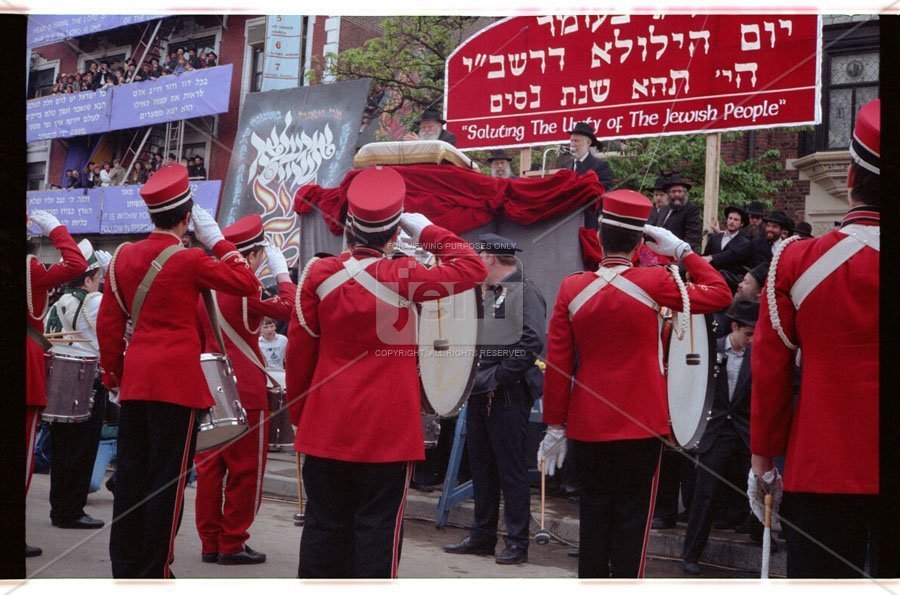
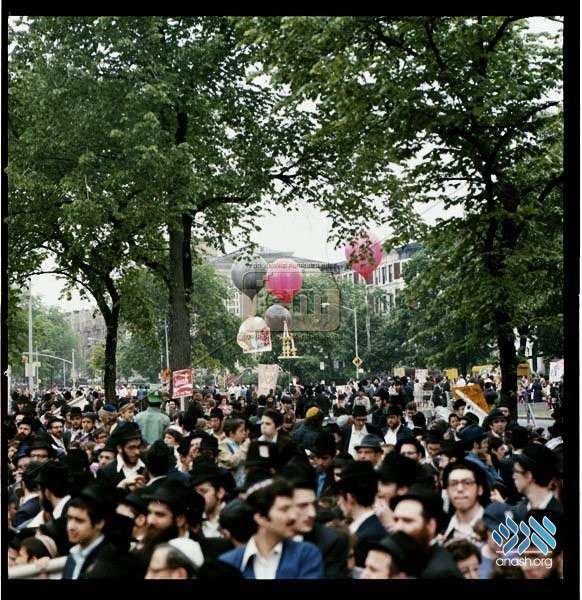
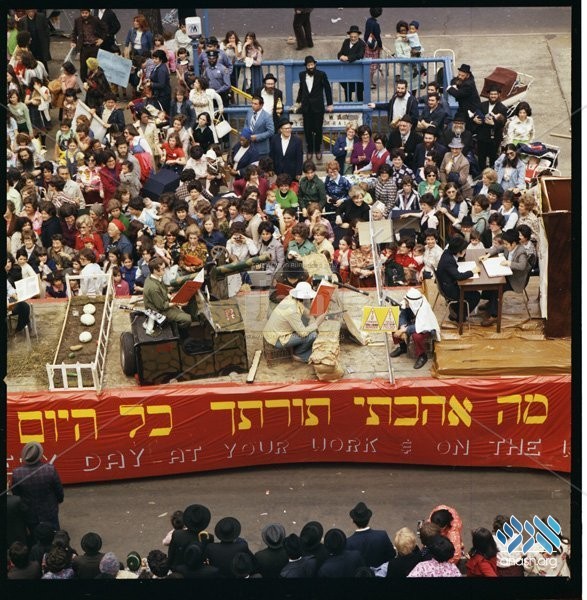
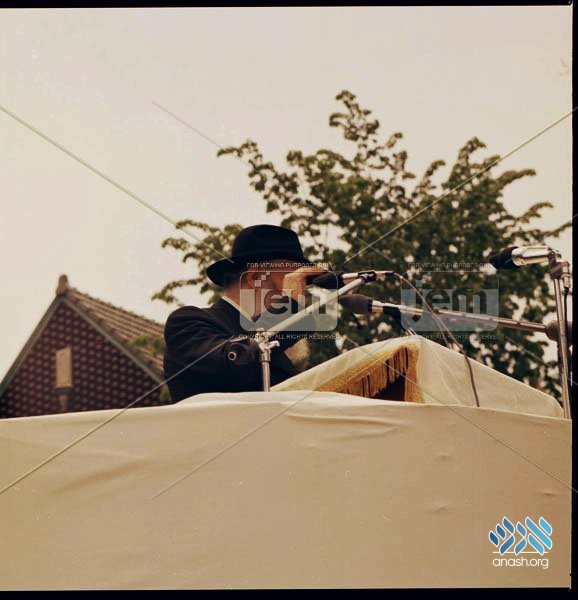
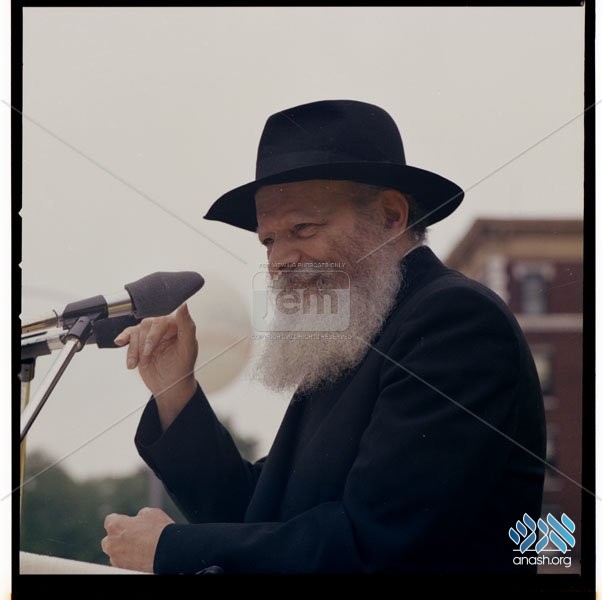
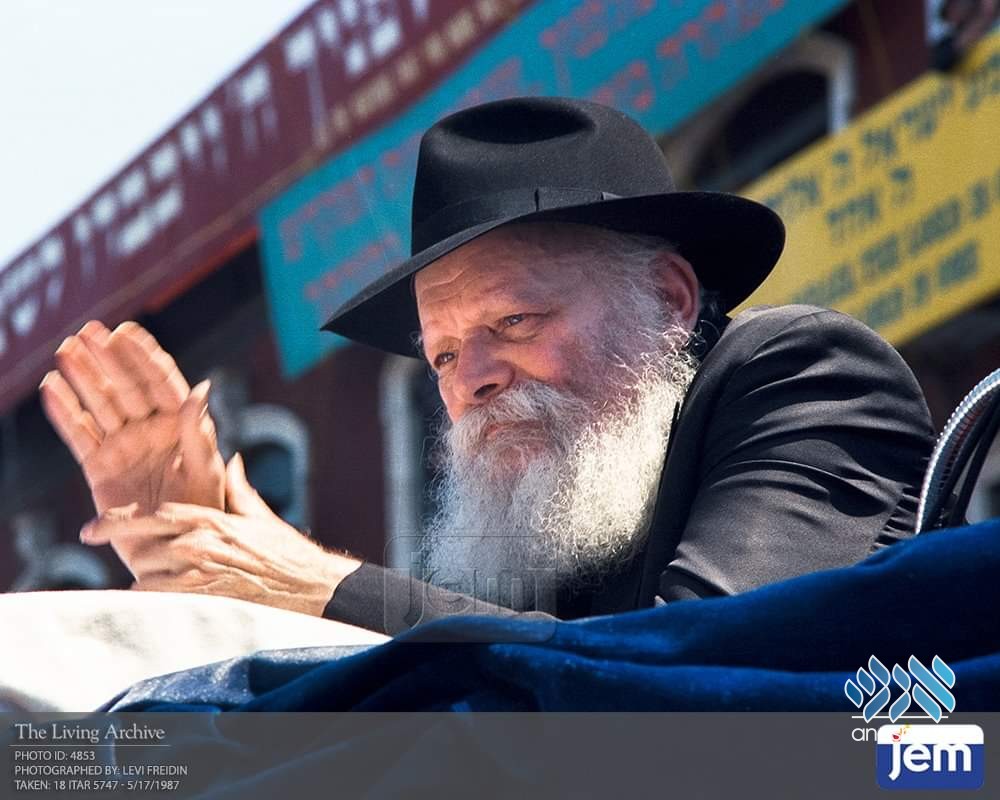
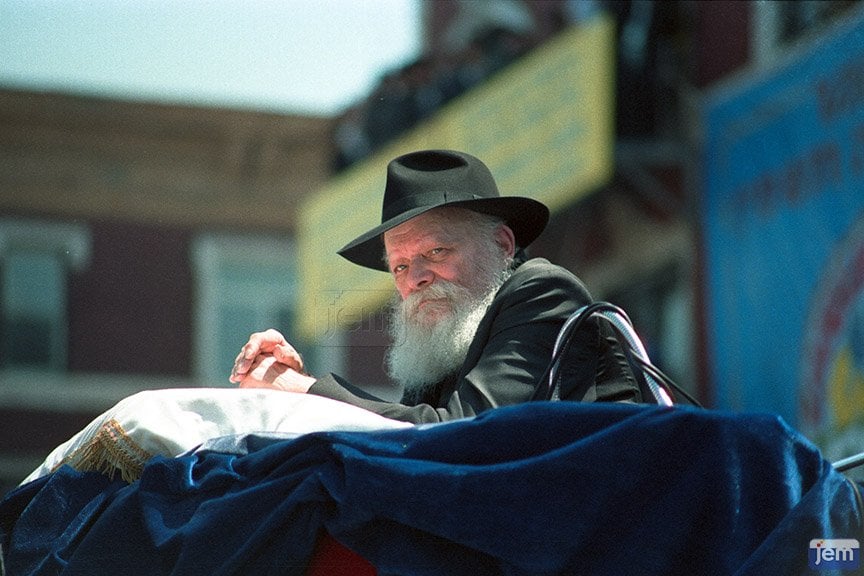
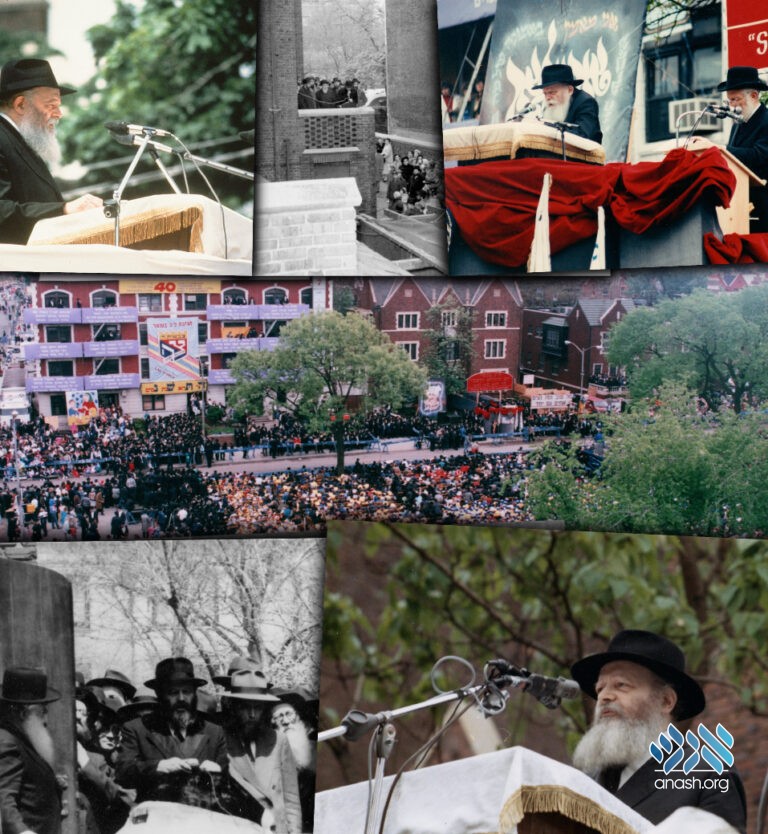
We appreciate your feedback. If you have any additional information to contribute to this article, it will be added below.